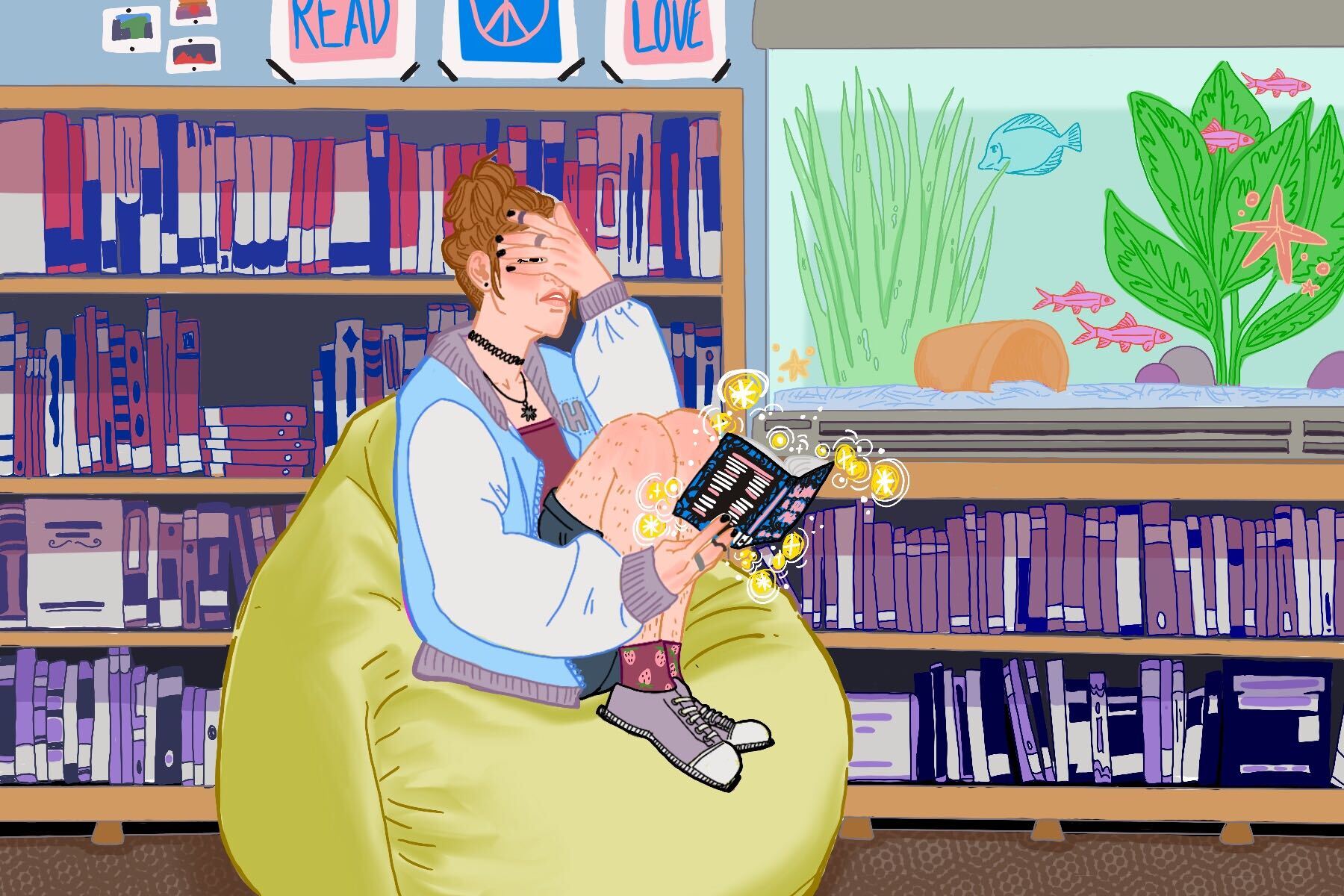A national uprising against police brutality over the past month has brought sustained discussions about white privilege into the mainstream. Public scholars and other voices have curated antiracist syllabi designed to prioritize Black voices and teach productive forms of allyship. Most of these reading lists include historical nonfiction texts about tenets of systemic racism, guides to allyship and books that unpack white privilege. Yet, there are ways to better understand racism through the experience of pleasure reading. Novels, too, force us to confront the world around us and challenge our understandings of race in America.
Novels like Kiley Reid’s “Such a Fun Age” and Celeste Ng’s “Little Fires Everywhere” give readers an incisively honest portrayal of race in their explorations of friendship, motherhood and making one’s place in the world. The two recent novels explore how the intimacy between Black and white characters becomes complicated by race and class privilege. Readers will feel the frustration of mutual empathy and respect thwarted by implicit biases.
Reid’s “Such a Fun Age” instantly became a New York Times bestseller after its release in December of 2019. Reid’s debut novel follows events after a young Black woman is wrongly accused of kidnapping the child she babysits.
Reid began work on the novel in 2015, and says she was “absolutely inspired” by the “everyday terror” represented by the death of Freddie Gray and Philando Castille, two Black men killed by police in the same year. However, with “Such a Fun Age,” Reid wanted to explore the “instances of racial biases that don’t end in violence,” as a way of “highlighting those moments that we don’t see on the news but still exist every day.”
“Such a Fun Age” delves into personal experiences of white privilege and African American identity by juggling between the perspectives of Emira and Alix. Alix Chamberlain, a successful public speaker and writer, has recently relocated to Philadelphia to follow her husband’s news anchor job. She hires a 25-year-old African American woman named Emira Tucker as a babysitter for her 2-year-old daughter, Briar. Desperate for stable employment, Emira begins to find joy in the job. However, when confronted by a security guard at a high-end grocery store, things become complicated.
Noting that Emira has a white child in her charge, the security guard accuses her of kidnapping. A crowd gathers, and a bystander, Kelley, films the exchange. Emira, though nervous, stands her ground with the guard, but nevertheless feels humiliated.
Kelley, the white bystander, and Emira begin dating after they bump into each other on the subway. As their relationship unfolds, Kelley tells a troubling story about an ex-girlfriend in high school who called the cops on a Black student and got his college scholarship cancelled. The girlfriend’s background and name are oddly similar to Mrs. Chamberlain’s.
However, Reid portrays Mrs. Chamberlain as a nice woman with good intentions. Mrs. Chamberlain takes maternal interest in Emira after promoting her to nanny status, and is intent on treating Emira as part of the family.
Even so, it is impossible to overlook the historically fraught dynamics in Alix and Emira’s relationship. Emira is preoccupied with finding a job with benefits as she will soon be kicked off her parents’ health insurance; Alix is an affluent business woman who pays a Black woman to love her white child.
For what would be an innocuous errand to Mrs. Chamberlain, Emira is sent to an upscale grocery store where she is racially profiled. There is, too, the fact that Mrs. Chamberlain only takes a special interest in bonding with Emira after the grocery store incident. As Reid writes, “Most days, Alix practically threw Briar into Emira’s arms on her way out the door, calling over her shoulder that Briar hadn’t eaten lunch or hadn’t really pooped.”
Reid’s portrayal of Alix Chamberlain expertly captures the complicated intentions of a white woman who thinks of herself as good but has spent little time confronting her implicit biases or understanding how others experience the world differently because of race. On the other hand, Kelley, the liberal white college grad who becomes Emira’s boyfriend, exhibits the kind of textbook “wokeness” that fails to regard the perspectives and desires of Black people in his life. Kelley passionately critiques Mrs. Chamberlain, and even Emira herself, for the employment arrangement. He insists, “Alex completely gets off on either having black people work for her or calling the cops on them. I can’t . . . Emira, you can’t be one of her people.”
Kelley seeks validation for being against the racism he interprets in Emira and Alix’s relationship. But he disregards Emira’s perspective and personal objectives for working as Mrs. Chamberlain’s babysitter by insisting that she quit a job that makes her happy to make him more comfortable.
Both Kelley and Mrs. Chamberlain’s intentions become slippery as the two begin to warn Emira about the problematic pasts of the other. Their advice takes on an air of competitiveness that betrays their preoccupation with looking “not racist” rather than prioritizing Emira’s well-being and sense of respect. Ironically, both Alix and Kelley, concerned with looking like good white people, push Emira farther away.
Reid’s book offers a realistic picture of everyday microaggressions that are not on the minds of people who don’t look like Reid or her protagonist Emira. As readers root for Emira, whose relationship with little Briar remains heartwarming, they confront the ways two white characters attempt to manipulate her experiences of racial trauma to their benefit.
“Such a Fun Age” forces readers to see that even white people who have close personal relationships with Black individuals often fail to interrogate their roles in perpetuating the silencing of Black voices. The book challenges white readers to engage with the topics of performative wokeness, racial fetishization and unchecked white privilege.
Similarly, Celeste Ng’s “Little Fires Everywhere” puts pressure on “meaning well.” A critique of Elena Richardson, the novel-turned-Hulu-series’s sympathetic villain, will reveal that good intentions are relative and often insufficient. Richardson wants to convince others that she is good, insistent on renting the little duplex she owns in Shaker Heights out for cheap because “she wanted to feel she was doing good with [the property].” Mrs. Richardson rents “only to people whom she felt were deserving but who had, for one reason or another, not quite gotten a fair shot in life.”
However, Elena’s evolving attitude toward Mia, her African American tenant, and other non-white characters in the book betray that she resents the way these individuals begin to threaten her sense of superiority and status in the community.
Elena, a journalist at the local newspaper, has spent nearly her whole life in perfectly-ordered Shaker Heights, where she is raising her four children with her husband, Bill, in a brick mansion. Once a sensational family court case grips Shaker Heights, Elena Richardson will stop at nothing to maintain the status quo, including sneaking behind Mia’s back to discover the intimate details of her unconventional past. Elena eventually resents Mia, unfairly judging her as the originator of the legal storm that begins to break Elena’s idyllic world apart.
Ng’s novel, one of The Washington Post’s Notable Books of the Year 2017, follows how Mrs. Richardson’s affectionate feelings toward Mia spiral into pure rage. Elena’s feelings change when Mia teams up with fellow waitress Bebe Chow to battle against Elena’s wealthy neighbors, the McCulloughs, in court. Through the absorbing storytelling and compelling characters, readers will navigate the unjust politics as the uber-privileged, wealthy, white families wield their systemic privilege to battle some of the most vulnerable in court — two women of color, both single mothers surviving on restaurant tips. The New York Times Book Review notes that Ng’s novel critiques the “innocent delusion of a post-racial America.”
Reading Ng’s novel can begin the work of reflecting on one’s own complicity in systems and practices that harm African Americans and other racial minorities in the United States.
Taken together, Reid’s and Ng’s novels are both engrossing stories about identity, friendship and motherhood. Novels by authors of color that center Black protagonists are great ways to start (or continue) thinking about race in a critical way through the perspective of someone else. These novels in particular allow readers to occupy the viewpoints of both white characters and fully fleshed out women of color. Representing the power of fiction to reflect the unpleasant reality of everyday racism and systemic inequalities, these novels provide space to empathize with strong female protagonists of color, question the status quo and consider personal failures.
In addition, readers can support women of color creatives by purchasing novels that confront race. Consider picking up both books from a Black-owned bookshop, such as Loyalty Bookstore. Pleasure reading and learning about race are never mutually exclusive.

















